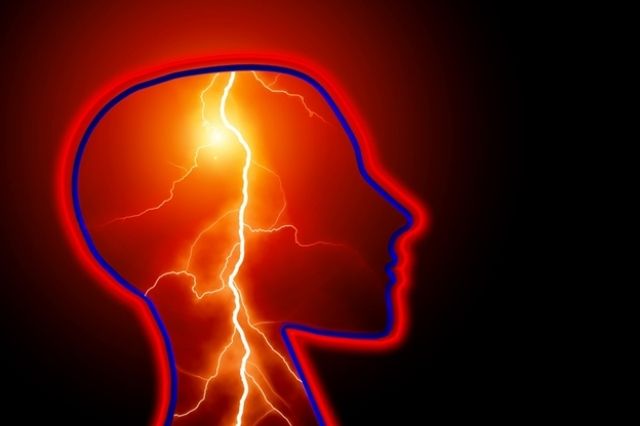Sometimes called a seizure disorder, epilepsy is a central nervous system condition that causes one to have recurrent seizures. It occurs due to an improper function of a part of the brain due to stroke, ischemia, infections, trauma, or genetic factors that produce unnecessary electrical activities. One must be wondering, does every seizure indicate epilepsy?
Well, it certainly depends on the number of times one experiences seizures. When it occurs at least twice within twenty-four hours, it is considered epilepsy. Epilepsy can affect anyone regardless of age, gender, or race. It mainly occurs as a result of injury to the brain that affects neuronal activities, and some of its symptoms include:
- Loss of consciousness
- A prolonged blank stare
- Momentary confusion
- Memory losses
- Inattention
The primary symptom of epilepsy is seizures, and the main therapy of this condition relies on the effective treatment of episodic attacks.
Epilepsy Management
The management of epilepsy requires both routine remedies and medication. Some natural herbs are also beneficial, while in some, especially the young, the seizures go away naturally. Here are some epilepsy management strategies.
Effective THC Products

THC treatment for different illnesses is now pretty convenient with various products, including THC Gummies, which offer discretion. Although THC might produce undesirable psychotic feelings of euphoria and hallucinations, recent studies certify that it is a potent anti-seizure therapy.
Anti-seizure effects of THC attribute to its partial interaction with the cannabinoid one receptors to alter different neuronal pathways. These receptors are part of the endocannabinoid system that controls various vital functions in pain perception, mood, body movements, and sleep.
The exact means of THC action in stabilizing body movements to alleviate seizures is still an area of active research. But several patient reviews and lab experiments show that medical marijuana products, especially Delta 9 THC and CBD, ease seizure symptoms.
THC also promotes alertness and sharp focus at regulated doses and can help relieve the temporary confusion that comes with epilepsy. It is interesting how relieving epileptic symptoms can be as easy as chewing a gummy whenever an epileptic patient feels light-headed.
Seizure Medication
These medications are commonly referred to as anti-seizure drugs or anticonvulsants. These drugs stabilize the brain’s electrical activity and reduce involuntary muscle contractions and part movements witnessed in epilepsy.
After examining factors like age, sex, preexisting medical condition, physical and physiological state, and the type of seizure you’re experiencing, the doctor prescribes the appropriate drug and its dosage. The prescription should strictly come from a doctor.
Types of Seizures
There are many categories of seizures, but it is vital to consider three seizure types: Absence seizures, generalized tonic-clonic seizures, and focal onset seizures. These types affect a person depending on the age, route cause, and genetic imprint. Absence seizures are common in children between the age of seven and twelve and can occur up to a hundred times in a single day. These attacks cause one to gaze into a space for some time and then return to normal as nothing has happened.
Compared to other seizure types, a generalized tonic-clonic or grand mal seizure is easy to spot. It starts with stiffening limbs; your hand or leg becomes rigid and produces unintended jerky movements that last about three minutes. A period of lethargy and confusion follows the involuntary body movements and lasts a while before one gains consciousness. These seizures occur when a more significant part of the brain is affected.
The last type of seizure, the focal onset or partial seizure, is not easily noticeable by others. Slight yanking motions may occur together with mild hallucinations that make you see things that are not there. During these episodes, you still have your consciousness, but you cannot control what happens. When partial seizures worsen, mumbling, wandering about, and fumbling with normal activities ensue. Other people might not notice because you still do things like you are in control.
How Do Anti-Seizure Drugs Work?
Anticonvulsants act as a cooling agent to reduce the excess firing of neural impulses to regulate body movements. In addition, the drugs curtail the spreading of a seizure within the brain.
Modern epilepsy drugs can block sodium channels in the brain to promote the action of gamma-aminobutyric acid or GABA, an inhibitory neurotransmitter. An increase in GABA activities in the brain reduces motion signals and stabilizes limb movements.
Surgical Removal of Brain Part
Some patients are resistant to antiepileptic drugs and require surgery. Two types of procedures can remove the affected part of the brain. When the affected brain portion is small, distinct, and does not control vital body functions like speech, action, sound perception, or vision, the doctor can perform a resective surgery.
Otherwise, when the brain section affected is large with irregular boundaries and controls vital body functions, a disconnective surgery is necessary. It involves cutting off the pathways in the CNS involved in the seizures.
Narval Stimulation
This treatment is a sophisticated process involving the insertion of a small gadget in appropriate places in the body to detect and nullify unnecessary nerve electrical activities. There are two types of nerve stimulation used depending on the type of seizure: vagus nerve stimulation and responsive neurostimulation.
Conclusion
Epilepsy is a central nervous system disorder that affects people regardless of age, race, or gender. Therefore, general knowledge is crucial to know how to handle it if it affects you. It is helpful to see a doctor if you experience any of the symptoms mentioned above for further guidance.



Leave a Comment